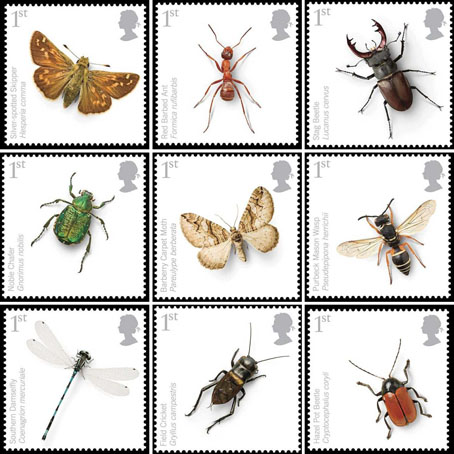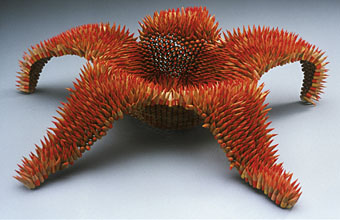
Adonis Blue Butterfly.
Beautiful stamps for the second in a Royal Mail series intended to bring attention to endangered species. These will be issued on Tuesday and are designed by Andrew Ross using photography from the Natural History Museum. The Independent notes the irony of the Royal Mail printing these even as they’re building a new distribution depot at West Thurrock which will destroy natural habitats. Invertebrate Conservation Trust Buglife had tried and failed to prevent the development.

top: Silver-spotted Skipper, Red Barbed Ant, Stag Beetle.
centre: Noble Chafer Beetle, Barberry Carpet Moth, Purbeck Mason Wasp.
bottom: Southern Damselfly, Field Cricket, Hazel Pot Beetle.
Previously on { feuilleton }
• Robert Lang’s origami insects
• James Bond postage stamps
• Lalique’s dragonflies
• Lucien Gaillard
• Wesley Fleming’s glass insects
• Please Mr. Postman
• Insect Lab







